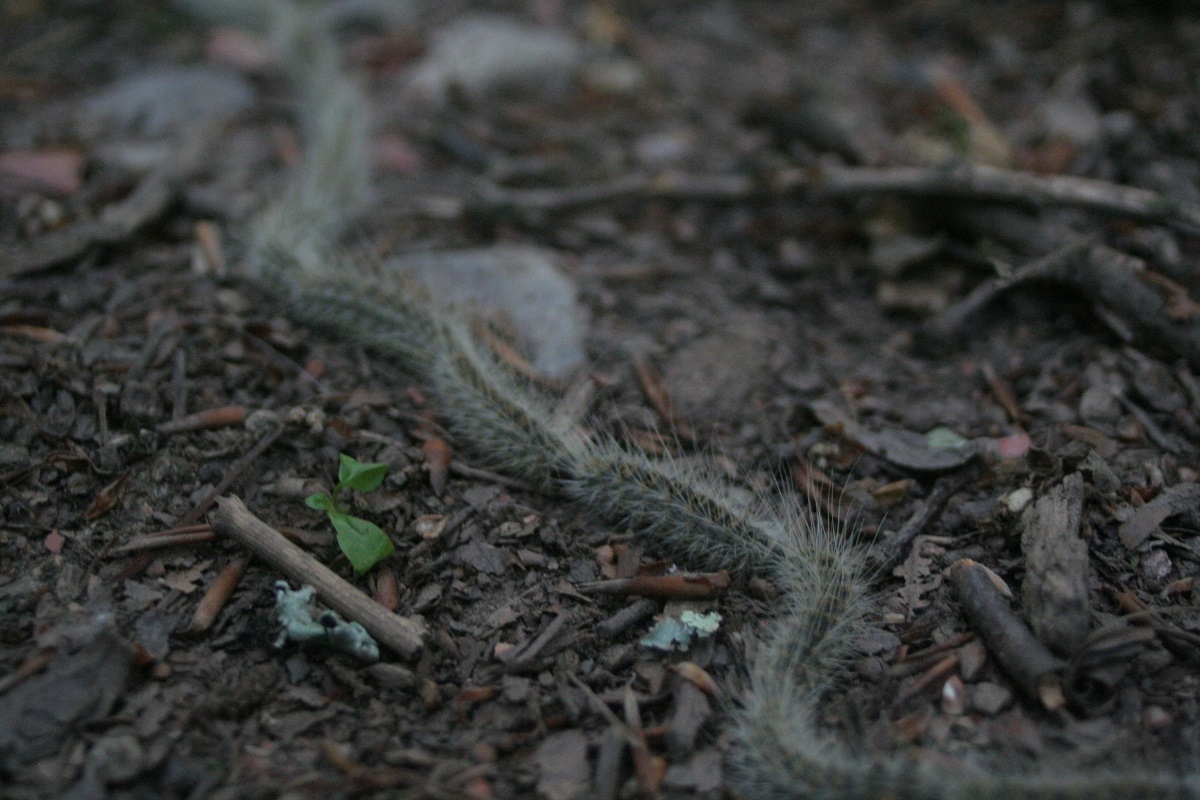The pine processionary caterpillar has returned to the region, pre-empting spring by several weeks and leading authorities to warn people of the dangers these potentially fatal creatures can have to pets and themselves.
There has been a recent inundation of pine processionary caterpillars in Monaco, as well as across southern France, and their return has made taking a stroll in the woods or parks rather a dangerous enterprise.
The pine processionary caterpillar is hard to miss. They can reach 40mm in length and have a distinctive orange-brown pattern on their bodies that is interspersed with black bands. They are also covered in fine, light-coloured quills that are highly irritating to mammals. Contact with them is uncomfortable at best and fatal at worst.
Their most distinguishing feature is their mode of travel. Once they’ve left their nest, they “walk” in single file and, since last Thursday, there have been numerous sightings of these processions in Monaco, notably near the pine trees in Port Hercule, in the UNESCO gardens, and near Monte-Carlo Beach Club.
“You have to be careful when walking the dog during this period,” Doctor Isabelle Basson-Blanchi from the Fontvieille Veterinary Clinic told Monaco Matin. “Dogs, especially puppies and large dogs, tend to pick up these caterpillars with their mouths. The stinging hairs, which are especially poisonous for the animal, cause oedema of the tongue. If it is not treated in time or in the right way, then the tongue becomes necrotic. Necrosis is irreversible. If it is a small piece of tongue missing, it is not very serious, but if the necrosis takes up all the organ, the animal is unable to feed itself.”
The caterpillars can provoke similar reactions in cats and other mammals. Reactions in humans who come into contact with the caterpillar’s hairs include severe and aggressive rashes and eye irritation.
In Monaco, treatments to kill off these caterpillars were implemented in November and December by the Urban Planning Department using a Bacillus thuringiensis spray. This spray is a pesticide that is considered safe for humans and doesn’t cause harm to ancillary insects like bees and ladybugs. Unfortunately, the parent moths were exceptionally prolific this winter season and the spread of the caterpillars has been substantial.
Cap d’Ail is also seeing an infestation and the local authorities have enacted a series of emergency treatments, which include placing large sand-filled bags around the bases of trees, which trap the caterpillars before they can reach the ground. They have also resorted to cutting down and burning tree branches with large populations of the insects. Spraying near the Tête de Chien is taking place and spaces near schools have also been treated to avoid any unnecessary contact with curious children.
“We were surprised by their sudden profusion this week,” Marc Traphagen, the deputy mayor of Cap d’Ail and the official in charge of green spaces, public parks and leisure facilities, told Monaco Matin. “Usually, they arrive in April. The mild temperatures, abnormally high for the period, may explain the phenomenon.”
Though avoidance is the best way to stop pets from being affected, if they are, go directly to the vet. The signs to look for are excessive drooling and swelling of the tongue. They can be successfully treated, but only with fast action. If help is far away, ice or peppermint drops can be given to limit swelling until help is reached. People should seek advise from a doctor.
Sign up for the Monaco Life newsletter. For the latest news, follow us on Facebook, Twitter, and Instagram.
Photo source: Noah Boyer for Unsplash
